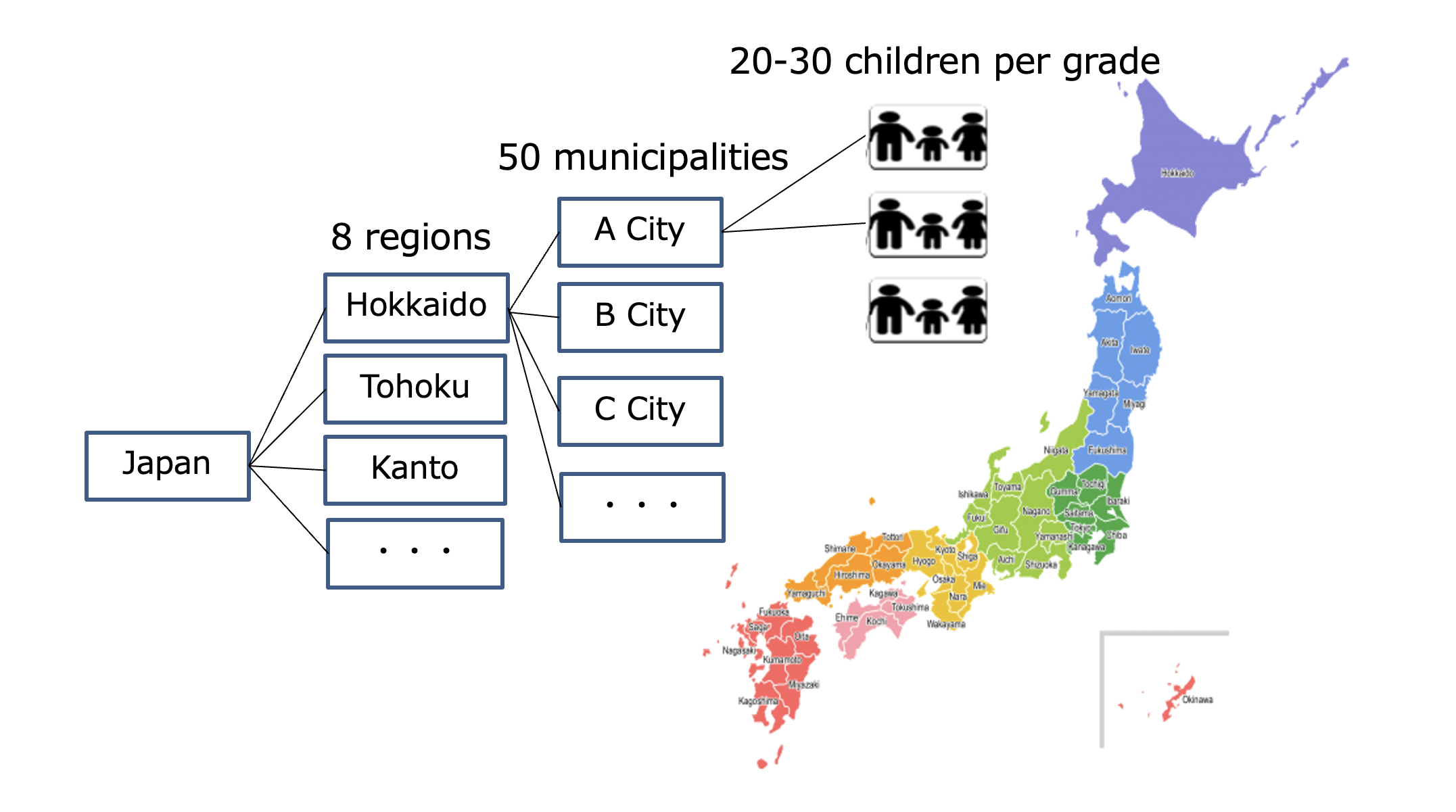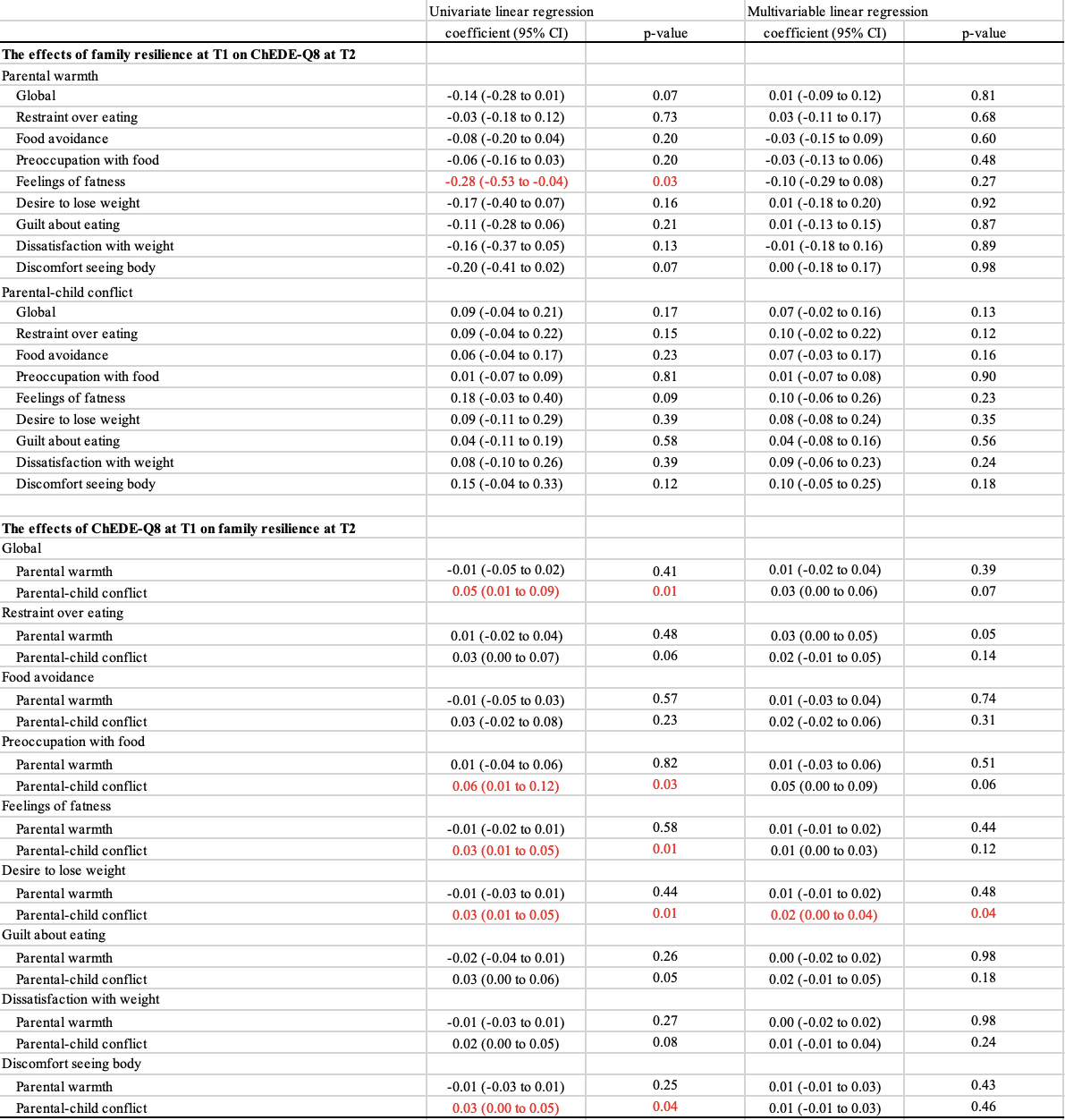Adolescent Medicine 2: Disordered Eating & School-based Initiatives
Session: Adolescent Medicine 2: Disordered Eating & School-based Initiatives
598 - The longitudinal association between disordered eating and family resilience in adolescents: a population-based cohort study
Saturday, April 26, 2025
2:30pm - 4:45pm HST
Publication Number: 598.6579
Kazuma Shinno, National Center for Child Health and Development, Setagaya-ku, Tokyo, Japan; Kazue Ishitsuka, National Center for Child Health and Development, Tokyo, Tokyo, Japan; Aurelie Piedvache, National Center for Child Health and Development, Setagaya, Tokyo, Japan; Naho Morisaki, National Center for Child Health and Development, Tokyo, Tokyo, Japan

Kazuma Shinno, MD (he/him/his)
Resident
National Center for Child Health and Development
Setagaya-ku, Tokyo, Japan
Presenting Author(s)
Background: Disordered eating (DE) imposes serious physical, psychological, and social burdens, highlighting the need for epidemiological research to prevent DE. Family-based therapy is effective for adolescents with DE. However, the influence of family resilience (FR) in preventing DE remains unclear. Most previous studies have been cross-sectional, with limited longitudinal research on the relationship between DE and FR.
Objective: We aimed to investigate the longitudinal relationship between DE and FR in a general adolescent population.
Design/Methods: We utilized data from the Japan Adolescent and Youth (JAY) cohort, a nationwide population-based accelerated cohort that annually incorporates new children aged 10-11 into the existing group tracked over time.
DE and FR were assessed at two-time points (T1: 2022, T2: 2023) using self-reported questionnaires. DE was measured via the 8 items child version of the Eating Disorder Examination (ChEDE-Q). FR was obtained through parental responses to the following statement: “My children and I have a warm relationship” (parental warmth) and “My children and I argue a lot” (parental-child conflict). Each question is rated on a 4-point scale and ranges from 0 (“Not at all”) to 3 (“Completely”). Univariate and multivariable linear regression analyses were performed to examine the bidirectional longitudinal association between DE and FR.
Results: A total of 1262 adolescents aged 10-15 (female: 52.2%) participated at T1, with 935 (74.1%) filling in questions related to DE and FR. At T1, the mean age was 12.9 years old (standard deviation [SD]: 1.8 years); the mean BMI was 18.9 (SD: 3.0). The overall global score of ChEDE-Q was 0.94 (SD: 1.30), with females showing significantly higher (1.35, SD: 1.45) compared to males (0.48, SD: 0.93). The difference was observed for all eight items of ChEDE-Q. Regarding FR, the overall parental warmth was 2.55 (SD: 0.66), and parental-child conflict was 0.79 (SD: 0.79), with no gender differences observed in either measure. Overall, FR at T1 was not significantly associated with DE at T2 after adjusting for age, gender, and baseline DE. Regarding an association of DE at T1 with FR at T2, an increase in desire to lose weight at T1 was associated with increased parental-child conflict at T2 with adjustment for age, gender, and baseline FR.
Conclusion(s): Although FR was not associated with future DE, worsening DE was associated with future parental-child conflict. We should carefully interpret the causal relationship between adolescent DE and FR.
Figure 1. A stratified two-stage random sample of children aged 10 to 15 and their parents from 50 municipalities across Japan
 The Japan Adolescent and Youth cohort employs a stratified two-stage cluster sampling design for selecting the nationally representative sample of children. Municipalities were randomly chosen from 8 regions in Japan, resulting in a total of 50 municipalities being selected. Afterward, children in each elementary and junior high school grade living in these 50 municipalities were randomly sampled based on their birth date recorded in the basic resident register.
The Japan Adolescent and Youth cohort employs a stratified two-stage cluster sampling design for selecting the nationally representative sample of children. Municipalities were randomly chosen from 8 regions in Japan, resulting in a total of 50 municipalities being selected. Afterward, children in each elementary and junior high school grade living in these 50 municipalities were randomly sampled based on their birth date recorded in the basic resident register.Table 1. Demographic characteristics of the study participants at T1 (2022) (n = 935, female: 52.2%)
 P-value was calculated using the Wilcoxon rank-sum test, and a value of <0.05 was considered statistically significant.
P-value was calculated using the Wilcoxon rank-sum test, and a value of <0.05 was considered statistically significant.SD: standard deviation, T1: 2022
Table 2. The longitudinal association between disordered eating and family resilience
 In the multivariable analysis, the effects of family resilience at T1 on ChEDE-Q8 at T2 were adjusted for age, gender, and ChEDE-Q8 at T1. The effects of ChEDE-Q8 at T1 on family resilience at T2 were adjusted for age, gender, and family resilience at T1.
In the multivariable analysis, the effects of family resilience at T1 on ChEDE-Q8 at T2 were adjusted for age, gender, and ChEDE-Q8 at T1. The effects of ChEDE-Q8 at T1 on family resilience at T2 were adjusted for age, gender, and family resilience at T1.T1: 2022, T2: 2023, 95%CI: 95% confidence interval
Figure 1. A stratified two-stage random sample of children aged 10 to 15 and their parents from 50 municipalities across Japan
 The Japan Adolescent and Youth cohort employs a stratified two-stage cluster sampling design for selecting the nationally representative sample of children. Municipalities were randomly chosen from 8 regions in Japan, resulting in a total of 50 municipalities being selected. Afterward, children in each elementary and junior high school grade living in these 50 municipalities were randomly sampled based on their birth date recorded in the basic resident register.
The Japan Adolescent and Youth cohort employs a stratified two-stage cluster sampling design for selecting the nationally representative sample of children. Municipalities were randomly chosen from 8 regions in Japan, resulting in a total of 50 municipalities being selected. Afterward, children in each elementary and junior high school grade living in these 50 municipalities were randomly sampled based on their birth date recorded in the basic resident register.Table 1. Demographic characteristics of the study participants at T1 (2022) (n = 935, female: 52.2%)
 P-value was calculated using the Wilcoxon rank-sum test, and a value of <0.05 was considered statistically significant.
P-value was calculated using the Wilcoxon rank-sum test, and a value of <0.05 was considered statistically significant.SD: standard deviation, T1: 2022
Table 2. The longitudinal association between disordered eating and family resilience
 In the multivariable analysis, the effects of family resilience at T1 on ChEDE-Q8 at T2 were adjusted for age, gender, and ChEDE-Q8 at T1. The effects of ChEDE-Q8 at T1 on family resilience at T2 were adjusted for age, gender, and family resilience at T1.
In the multivariable analysis, the effects of family resilience at T1 on ChEDE-Q8 at T2 were adjusted for age, gender, and ChEDE-Q8 at T1. The effects of ChEDE-Q8 at T1 on family resilience at T2 were adjusted for age, gender, and family resilience at T1.T1: 2022, T2: 2023, 95%CI: 95% confidence interval

